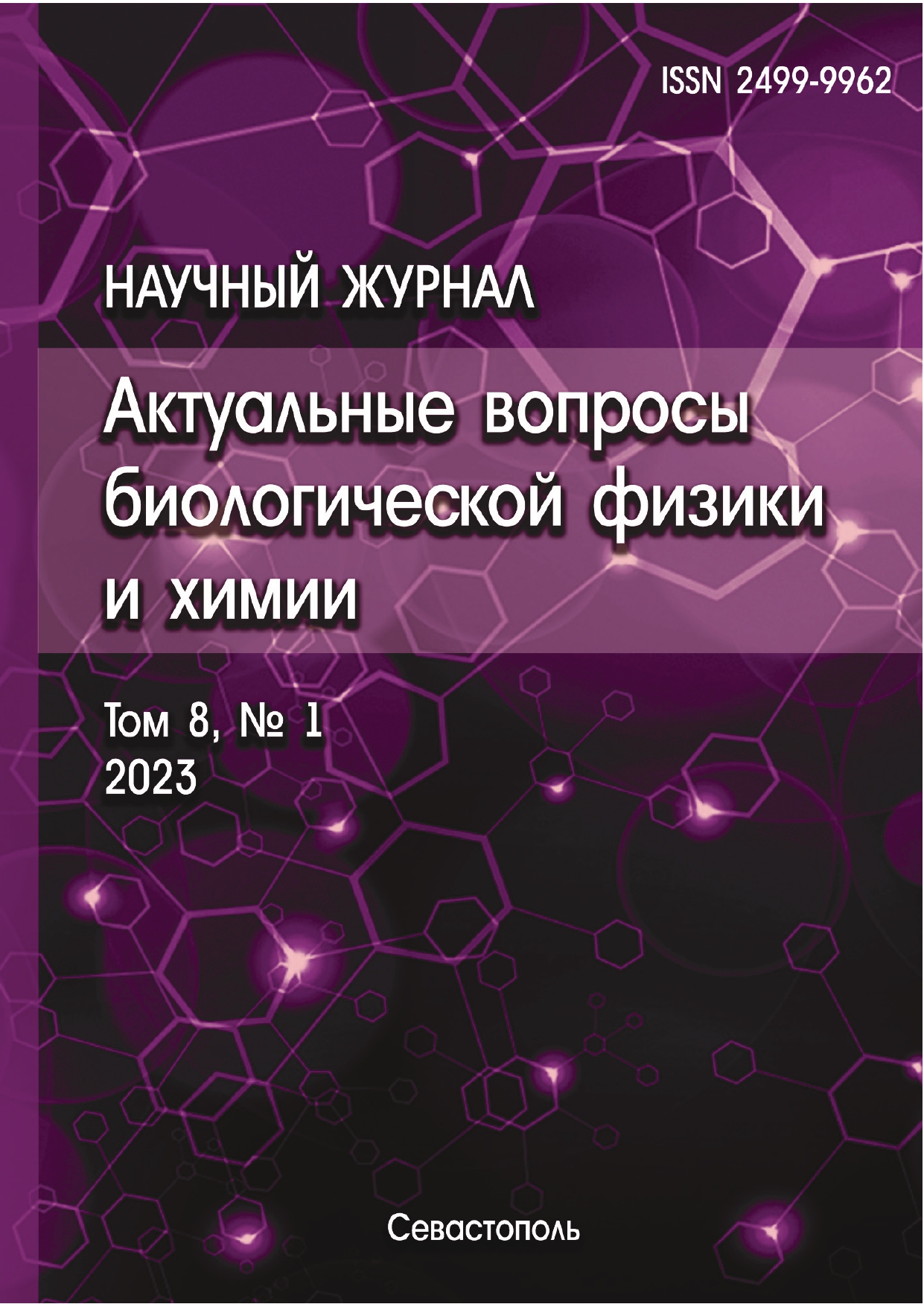Krasnoyarsk, Krasnoyarsk, Russian Federation
Krasnoyarsk, Krasnoyarsk, Russian Federation
from 01.01.2009 until now
Kemerovo, Russian Federation
Krasnoyarsk, Krasnoyarsk, Russian Federation
Kemerovo, Russian Federation
from 01.01.2022 until now
Kemerovo State Medical University
from 01.01.2008 to 01.01.2023
Kemerovo, Kemerovo, Russian Federation
Krasnoyarsk, Krasnoyarsk, Russian Federation
In vivo experiments have shown that the addition of caffeic acid to the luminous mycelia of the higher fungi Neonothopanus nambi and Armillaria borealis stimulates a rapid and significant (by an order of magnitude or more) increase in the intensity of their light emission. It has been suggested that the observed effect of fungal luminescence activation may be mediated by the oxidation of caffeic acid by enzymes of the ligninolytic complex of basidiomycetes (in particular, by peroxidases) with the emission of visible light quanta. Comparative in vivo experiments showed that the addition of hispidin (the precursor of luciferin in the light emission reaction of higher fungi) did not affect the intensity of bioluminescence of the mycelia. At the same time, in vitro studies found that caffeic acid significantly suppressed the NADPH-hispidin-activated emission reaction of luminescent systems isolated from the mycelia of N. nambi and A. borealis. The inhibitory effect of caffeic acid is considered and discussed in the work from the standpoint of the classical biochemistry concept on enzyme inhibition by the reaction product according to the negative feedback principle. In general, the results obtained develop and supplement the understanding of the mechanisms of light emission in higher fungi and testify in favor of the fact that the generation of visible light quanta in basidiomycetes can be carried out by different biochemical pathways involving different enzymes (or enzyme systems). Clarifying the mechanism of stimulation of in vivo bioluminescence of higher fungi by caffeic acid is a priority for further research.
luminous higher fungi, basidiomycetes, luminous mycelium, fungal luminescent systems, caffeic acid, hispidin, reduced pyridine nucleotides
1. Shimomura O. Bioluminescence: chemical principles and methods. Singapore: World Scientific Publishing Co. Pte. Ltd., 2006, 470 p. DOI: https://doi.org/10.1142/6102; EDN: https://elibrary.ru/WTBIGX
2. Desjardin D.E., Oliveira A.G., Stevani C.V. Fungi bioluminescence revisited. Photochemical and Photobiological Sciences, 2008, vol. 7, no. 2, doi:https://doi.org/10.1039/b713328f. EDN: https://elibrary.ru/ALHXFL
3. Bondar V.S., Shimomura O., Gitelson J.I. Luminescence of higher mushrooms. Journal of Siberian Federal University. Biology, 2012, vol. 4, no. 5, pp. 331-351. EDN: https://elibrary.ru/PVBEWV
4. Ke H.-M., Tsai I.J. Understanding and using fungal bioluminescence – recent progress and future perspectives. Current Opinion in Green and Sustainable Chemistry, 2022, vol. 33, art. 100570, doi:https://doi.org/10.1016/j.cogsc.2021.100570. EDN: https://elibrary.ru/AHGIGF
5. Purtov K.V., Petushkov V.N. et al. The chemical basis of fungal bioluminescence. Angewandte Chemie International Edition, 2015, vol. 54, no. 28, doi:https://doi.org/10.1002/anie.201501779. EDN: https://elibrary.ru/UGJNWT
6. Kotlobay A.A., Sarkisyan K.S. et al. Genetically encodable bioluminescent system from fungi. Proceedings of the National Academy of Sciences, 2018, vol. 115, no. 50, doi:https://doi.org/10.1073/pnas.1803615115. EDN: https://elibrary.ru/ABLLVA
7. Mitiouchkina T., Mishin A.S. et al. Plants with genetically encoded autoluminescence. Nature Biotechnology, 2020, vol. 38, no. 8, doi:https://doi.org/10.1038/s41587-020-0500-9. DOI: https://doi.org/10.1038/s41587-020-0578-0; EDN: https://elibrary.ru/KPTLXE
8. Ronzhin N.O., Posokhina E.D., Mogilnaya O.A., Puzyr A.P., Gitelson J.I., Bondar V.S. Cytochrome P450 system may be involved in the light emission of higher fungi. Russian Journal of Biological Physics and Chemistry, 2022, vol. 7, no. 2, doi:https://doi.org/10.29039/rusjbpc.2022.0522. EDN: https://elibrary.ru/RMMYNG
9. Teranishi K. Second bioluminescence-activating component in the luminous fungus Mycena chlorophos. Luminescence, 2017, vol. 32, no. 2, doi:https://doi.org/10.1002/bio.3165. EDN: https://elibrary.ru/WKLYRG
10. Teranishi K. A combination of NADHP and hispidin is not essential for bioluminescence in luminous fungal living gills of Mycena chlorophos. Luminescence, 2017, vol. 32, no. 5, doi:https://doi.org/10.1002/bio.3265. EDN: https://elibrary.ru/YDKCZI
11. Teranishi K. Trans-3-hydroxyhispidin is not an actual bioluminescence substrate in pileus gills of the luminous fungus Mycena chlorophos. Biochemical and Biophysical Research Communications, 2018, vol. 504, no. 1, doi:https://doi.org/10.1016/j.bbrc.2018.08.153. EDN: https://elibrary.ru/VITKGJ
12. Mogilnaya O.A., Ronzhin N.O., Artemenko K.S., Bondar V.S. Morphological properties and levels of extracellular peroxidase activity and light emission of the basidiomycete Armillaria borealis treated with β-glucosidase and chitinase. Mycosphere, 2017, vol. 8, doi:https://doi.org/10.5943/mycosphere/8/4/11. EDN: https://elibrary.ru/XXPIEX
13. Mogilnaya O., Ronzhin N., Posokhina E., Bondar V. Extracellular oxidase from the Neonothopanus nambi fungus as a promising enzyme for analytical applications. The Protein Journal, 2021, vol. 40, no. 5, doi:https://doi.org/10.1007/s10930-021-10010-z. EDN: https://elibrary.ru/HQNNNG
14. Bondar V.S., Puzyr A.P., Purtov K.V., Petunin A.I., Burov A.E., Rodicheva E.K., Medvedeva S.E., Shpak B.A., Tyaglik A.B., Shimomura O., Gitelson J.I. Isolation of luminescence system from the luminescent fungus Neonothopanus nambi. Doklady Biochemistry and Biophysics, 2014, vol. 455, no. 1, doi:https://doi.org/10.1134/S1607672914020045. EDN: https://elibrary.ru/SKSZMV
15. Puzyr A.P. Medvedeva S.E., Artemenko K.S., Bondar V.S. Luminescence of cold extracts from mycelium of luminous basidiomycetes during long-term storage. Current Research in Environmental and Applied Mycology, 2017, vol. 7, doi:https://doi.org/10.5943/cream/7/3/9. EDN: https://elibrary.ru/PRZLOH
16. Airth R.L., McElroy W.D. Light emission from extracts of luminous fungi. Journal of Bacteriology, 1959, vol. 77, doi:https://doi.org/10.1128/jb.77.2.249-250.1959.
17. Airth R.L. Foerster G.E. The isolation of catalytic components required for cell-free fungal bioluminescence. Archives of Biochemistry and Biophysics, 1962, vol. 97, doi:https://doi.org/10.1016/0003-9861(62)90124-8.
18. Puzyr A.P., Medvedeva S.E., Burov A.E., Zernov Yu.P., Bondar V.S. Detection of hispidin by a luminescent system from basidiomycete Armillaria borealis. Doklady Biochemistry and Biophysics, 2018, vol. 480, no. 1, doi:https://doi.org/10.1134/S1607672918030146. EDN: https://elibrary.ru/YCDZXV











